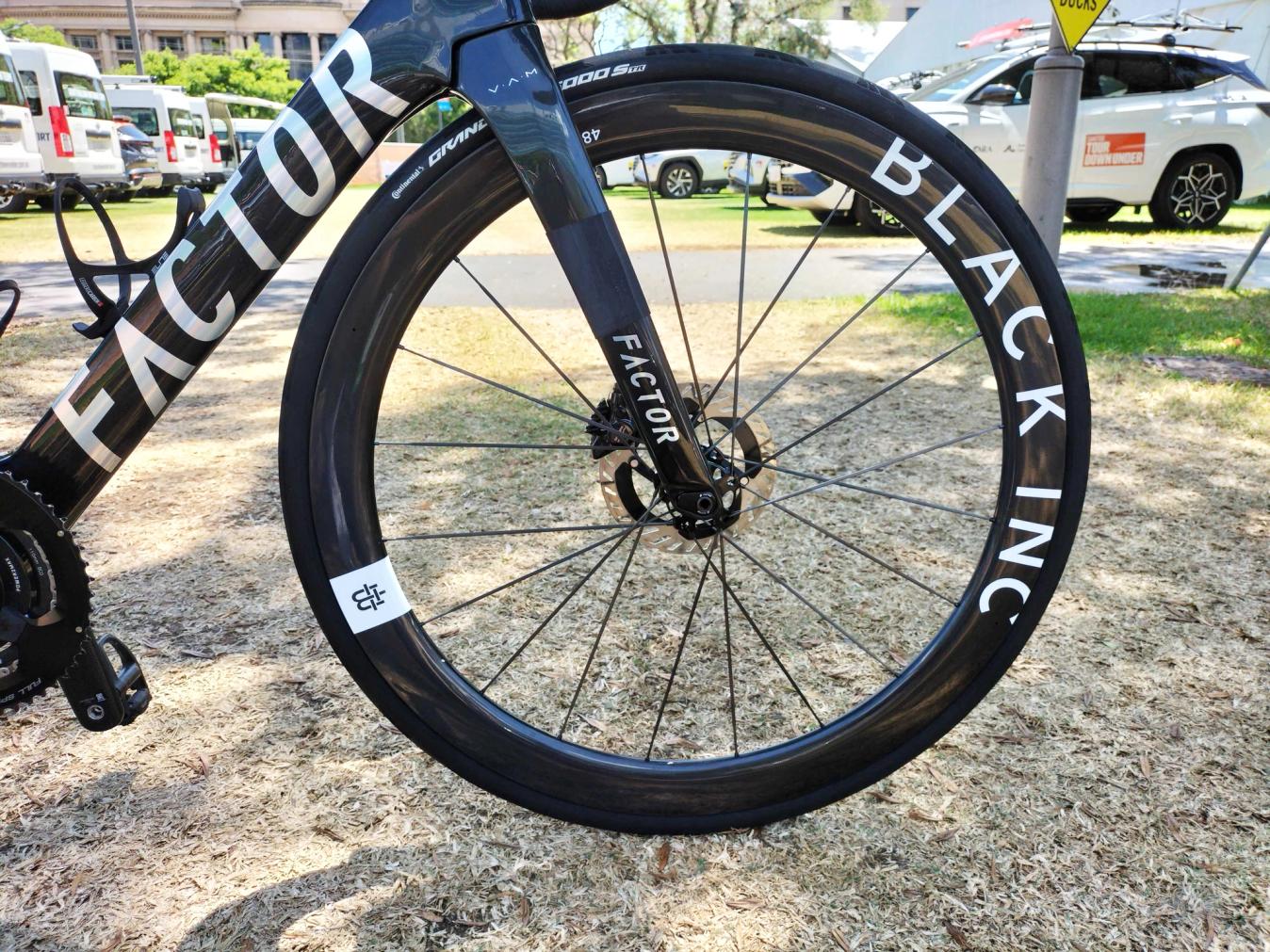Israel-Premier Tech pro bike: George Bennett’s Factor Ostro VAM
A closer look at the team’s Factor bike for 2024, specced with Shimano, Black Inc and Continental components
Tom Hallam-Gravells
Online Production Editor
© GCN
George's Bennett's bike for the Tour Down Under
After a short two-year stint riding Colnago bikes at UAE Team Emirates, George Bennett has made the switch to Israel-Premier Tech and their Factor bikes for 2024. The New Zealander got his first taste of WorldTour action in 2024 atop his new steed at the recent Tour Down Under, where he made a quiet start to the season.
We got a close-up look at the 33-year-old’s bike ahead of the race and had a chance to speak to him about the controversial topic that emerged over the off-season: brake lever position.
New Factor Ostro VAM on the horizon?
Before we delve into the lever-based controversy, it’s time to take a quick glance at Bennett’s bike, which was the aero-focussed Ostro VAM. Factor also offers the lightweight O2 VAM and, if its claims are anything to go by, Bennett should have no problems flying up climbs atop it. According to Factor, it’s “the world’s fastest climbing bike”.

© GCN
The Ostro VAM has an aero frame but is also lightweight
Considering the climbing-focussed nature of the O2 VAM, you may expect the Ostro VAM to fill the aero void, as is the case for most brands that have two dedicated race bikes in their line-up. While it does partially do that, the Ostro isn’t designed to be an all-out aero machine and instead combines both aero and lightweight features into what Factor describes as “the everything bike, making you fast whatever the terrain”. By all accounts, it’s a superbike. These have been adopted by many brands who have shunned dedicated aero and lightweight bikes for one that can do it all. In Factor's case, it has made the Ostro VAM into an aero superbike while also keeping a pure climbing bike in the O2 VAM.
All of this could soon be set to change after mysterious sightings of what may be a new Ostro VAM throughout January. On the verge of reaching four years of age, the release of a new version can’t be too far into the future.
Black Inc and Shimano, with an appearance by FSA
Bennett’s bike was powered by Shimano’s Dura-Ace groupset, although there was a twist on the common recipe in the form of an FSA Powerbox crankset. These have power meters built in and for his build, Bennett had what was labelled as a 55/39t crankset, but the inner ring appeared to be a 40t. That differs from the 54/40t option that has become the norm for those running a regular Dura-Ace crankset.

© GCN
The FSA Powerbox crankset
The 11-30t cassette was also on the smaller size, at least if the other bikes at the Tour Down Under were anything to go by. Most took advantage of the wider gearing options of an 11-34t.

© GCN
An 11-30t Shimano cassette
Many of the finishing components were provided by Black Inc, which is Factor’s sister company, including the 48/58 wheelset. Not currently available on its website, this appears to be an as-yet unreleased model. Up front, Black Inc also accounted for the integrated bar and stem.

© GCN
Are these new Black Inc wheels?
The wheels were paired with Continental Grand Prix 5000 TT tyres; a popular choice in the pro peloton, as was the 28mm width.
A Selle Italia SLR Boost Pro Team saddle completed the build.

© GCN
The Selle Italia SLR Boost was George Bennett's saddle of choice
Are inward-facing levers dangerous?
Now for the big talking point at the Tour Down Under. In the off-season, the UCI announced plans to introduce regulations during the 2024 season that will restrict how far inwards brake levers can be angled. It’s a trend that has cropped up in recent seasons as it allows riders to get into a narrow position, reducing their frontal area which results in less drag.
While the maximum angle levers can be positioned at hasn’t yet been confirmed by the UCI, it was spotted measuring lever angles at the Tour Down Under for the first time. This naturally caused a bit of a stir with a conflicting mix of opinions from riders we spoke to at the race. Bennett was firmly in the UCI’s favour, pointing to previous crashes he believes were caused by the position.
“I think it’s a good rule. I think it was getting more and more and more extreme,” Bennett explained. “You started seeing guys riding with one little pinkie wrapped around the bars and you can’t react if someone brakes in front of you.
“I saw last year, as a good example, in this race [Tour Down Under], first stage, where there was a crash and a guy came in like five seconds later and clipped them all from behind because he couldn’t get to his brakes because they were basically pointing inwards.
“If no one’s allowed to do it, we’re all at the same advantage and it’s just safe for everyone.”
- Read more: Quinn Simmons believes UCI is overlooking bigger safety issues amid new lever regulations

© GCN
Bennett's lever set-up
It will come as no surprise, then, that Bennett’s levers were set up in the traditional way. That wasn’t the same throughout the whole peloton, though, with many riders undeterred amid the current lack of clarification surrounding the rules. We’ll keep an eye on the situation over the coming months to see how it develops.
Bike Specification
Bike
year
2020
model
Ostro VAM
Manufacturer
Factor





.png?w=600&auto=format)
.jpg?w=600&auto=format)




